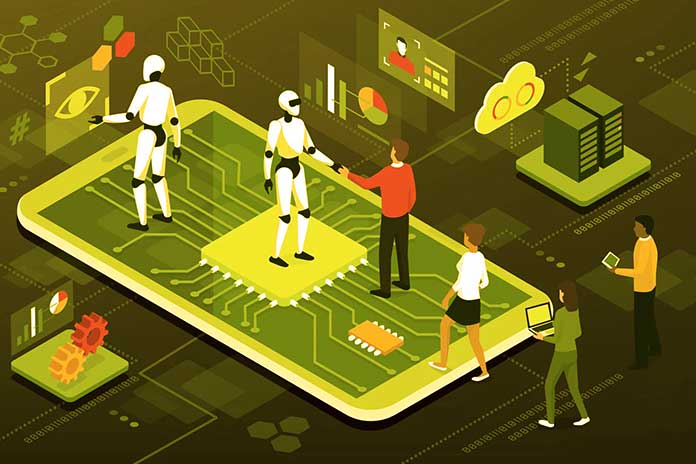Ad tech: AI As A Tool To Increase Sales

Data analysis conducted by artificial intelligence can be a booster of sales strategies, and an indispensable added value for monitoring results, insights, targeting, and lead generation. Let’s see how. Each online interaction generates a significant amount of data, which continues to grow in volume at a rapid pace. Smart objects, connected sensors, and digitized processes contribute to this data collection, extending the boundaries from virtual to everyday reality. Behind this impressive amount of data lies vital information for the business intelligence of companies of all sizes. Collecting data and extracting this information represents the challenge of this decade and artificial intelligence is the main tool to win the battle thanks to Ad tech.
Ad Tech, How To Get Value From Data
Ad tech stands for advertising technology, or the technology used to advertise.
To obtain business value from data, AI is responsible for:
- Classify them
- Make them homogeneous
- Identify patterns and patterns
- Calculate predictive indications
The models generated independently by the machines are not intended to replace human intervention, but to simplify processes and standardize the marketing and promotion phases. AI evolves by focusing on accuracy in the first place, but also on the “explainability” of results: any information obtained must be traceable, to understand where to intervene to improve results.
The patterns identified and the predictive indications based on the data influence not only the way of promoting the product/service, but also the design of the same. The market requires a data-driven process that covers the entire creative cycle, from the original idea to the design of advertising campaigns.
AI For Insights
For decades, surveys and statistical analyzes have been the ideal tool for probing the opinions of users and consumers. With these methods, however, it is difficult to obtain an accurate picture of the audience due to the intrinsic bias introduced by the polls. The use of artificial intelligence to analyze user habits and conversations cancels this bias and allows for particularly accurate predictions. Neural networks for pattern recognition can detect patterns in large data streams. With these tools available it is possible to analyze consumer behavior, interpolating the information relating to their contacts with other consumers, with those that are the result of interactions with web tools. AI is thus able to shape accurate models that anticipate needs, interests, and trends for the future.
AI For Audience Classification
Online interactions between people are governed by mechanisms in some ways similar to those of offline interactions. The scenario is instead profoundly different, and this makes the classification of “Online audience personas” complex. This category of interactions generates a very high amount of data, coming from non-homogeneous platforms. These two obstacles to correct target classification are ideal challenges for artificial intelligence. Many online interactions are public and easily accessible, so creating large datasets to use as a reference for model training is not particularly complex. Starting from these databases, it is possible to combine semantic analysis tools with statistical tools and neural networks, to obtain archetypes of Social Media Behaviors classes. Correct classification of the public through AI maximizes the effectiveness of online investments; the message will be conveyed directly to those on target for the product/service.
AI For Lead Generation
The lead generation process, which leads to the first contact with a potential customer, becomes increasingly complex. After a period of attention to “quantity” in the field of lead generation, now the focus is entirely oriented towards “quality”. Today the process is completely data-driven and involves a first phase of communication on target and the second phase of data collection through special sensors installed on websites and landing pages. Excellent results are obtained in both phases, leaving the task of data analysis to specially trained AI.
In the communication phase, tools for social listening and sentiment analysis are used, tools capable of generating effective strategies to bring the discussion into the trend in the niche to which the service/product belongs. In the data collection phase, on the other hand, a pre-evaluation of leads is carried out before a sales employee even proceeds with the first contact. This information makes the lead generation process much more streamlined and effective, simplifying the work of human operators and speeding up the phases that culminate in the sale.
AI To Track Results
The budgets invested in digital campaigns, Ad tech, and promotional initiatives are under the magnifying glass of management, with the natural goal of optimizing costs by maximizing the benefits of each project. However, analytics lend themselves to different interpretations, making the task of identifying the strengths and weaknesses of a strategy complex. There are various approaches to solving monitoring problems with the tools made available by AI. Some solutions involve the use of deep neural networks that assign a “weight” to the links between the data, highlighting any patterns and correlations. Other classifications and regression tools are useful for creating predictive models based on the results already obtained. The monitoring of promotional campaigns requires that the results of the analyzes are traceable and explainable. For this reason, a black-box approach to AI is not particularly effective. Rather, in this case, the purpose of the algorithms will be to develop Augmented Intelligence or to give analysts all the tools to understand the intrinsic meaning of the data without the possibility of misinterpretation.
Conclusions
Neural networks and other AI algorithms have the potential to turn data into information. Schemes, patterns, and forecasts that would be impossible for a human analyst to identify are transformed into business intelligence, channeling the analyzes into a single operational flow for the optimization of processes related to the product: from its design to sales, through to activities. of marketing. In this way, artificial intelligence enters by force in Ad tech by enhancing marketing strategies.
